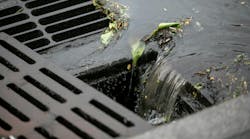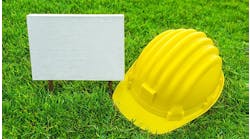My recent visit to a newly opened cavern system stirred up long-forgotten memories of troubleshooting a plant rainwater system. Examining the cavern walls revealed obvious waterline markings, indicating where water levels would remain stagnant for extended periods. However, within such cavern systems, water levels can fluctuate rapidly in response to rainfall events.
Rainwater management is the most prevalent underground system across various industries. A significant portion of the chemical, petrochemical and refining sectors in the United States operate in regions prone to severe rainfall events. Akin to most utilities, rainwater systems seldom receive additional investment for capacity expansions as plants grow larger. The prevailing mindset is often that since the existing system has functioned adequately thus far, accommodating 'just a bit' more rainwater influx should be manageable.
However, at one particular plant, this assumption proved flawed. Following an expansion project, a major storm event overwhelmed the existing rainwater system's capacity, resulting in significant flooding across parts of the facility. Some units had to be shut down preemptively to mitigate potential issues. In the aftermath of the rainstorm, the task at hand was to evaluate the rainwater system's limitations and identify ways to augment its capacity.
The mere prospect of dealing with a plant's underground systems instills a sense of trepidation in operators, troubleshooters and project engineers alike. In large facilities, these networks are often old, poorly documented (if at all), subjected to unseen wear and tear, lacking in comprehensive maintenance, and rarely fully understood.
Over time, modifications often combine different elements that do not function cohesively together. One aspect of this is that current priorities may have been overlooked during the system's original design and construction phases. An example is the extensive use of sewer covers to prevent minor process leaks or surface contaminants from entering the systems. However, these sewer covers can inadvertently trap air within the system during a major rainstorm. The trapped air can then create dynamic flow issues throughout the network.
Testing Rainwater Systems Presents Challenges
While the system may function adequately under normal conditions, it may fail to cope with high-volume flows. Obtaining accurate data on water levels within the system during a major storm event is extremely difficult. Inevitably, something goes awry during such weather events, leaving operations personnel overwhelmed. Even if personnel are available, the most accessible measurement points are surface water levels in various drain sumps and manholes – data points that are arduous to gauge accurately amid the rainfall. Furthermore, manholes are often classified as confined spaces, necessitating special precautions for access during storm events.
If you do have to troubleshoot one of these stormwater systems, a few key points need to be kept in mind.
The most recent project that added extra drain area or a new flow to the system may not be the real source of the problem. You need to check every potential load added since the last major storm. That may be years ago.
Local rainfall may vary dramatically based on the data gathered at the closest official local weather station. Every plant should have its own weather station. Plant data has shown that local rainfall rates are substantially different from official weather stations, even ones close to the plant. Knowing the actual water load is important to understanding the system.
Many types of underground damage dramatically change flows in parts of the systems. Damage may include subsidence that puts liquid levels below where you expect; eroded passages that create un-mapped flows; plugs from debris, animals and roots; collapsed channels and pipes; surface penetrations from pilings; and others. Systems flow by gravity head. Small differences in elevations and effective opening size create large capacity differences.
At lower flow rates, rainwater systems typically operate as free-surface flows, with a liquid surface present within the system. As flow rates increase, the liquid levels rise correspondingly. This reduction in available vapor space can lead to pressurization if the vapor (or air) cannot vent adequately, potentially causing a dramatic drop in achievable flow rates. In extreme cases, the entire system can become gas-locked, reducing capacity to zero.
Complex systems incorporate sumps to prevent the spread of flammable vapors or light flammable liquids throughout the plant. These sumps feature water seals. Even minor maintenance issues with the seal levels – either too low or too high – can result in major flow problems within the system.
While this is not an exhaustive list, it does give a good idea of some of the complexities that must be kept in mind.
To address the issues with our problematic rainwater system, we initiated a comprehensive review of all available documentation. Subsequently, tracer studies were conducted to map out the functional flow channels. After identifying potential bottlenecks, we selectively flooded specific segments to test the capacity limitations of those suspicious areas. Finally, modifications were implemented, including diverting a portion of the sewer load into a newly constructed secondary channel. Additionally, critical sumps were outfitted with instrumentation to monitor water levels during major rain events. So far, the modifications appear to be successful.



